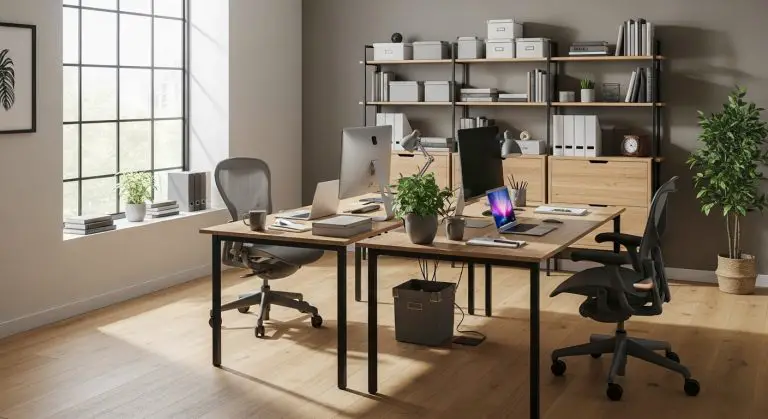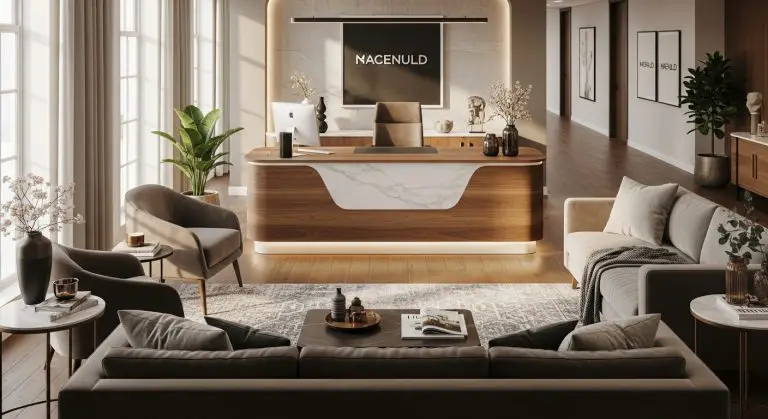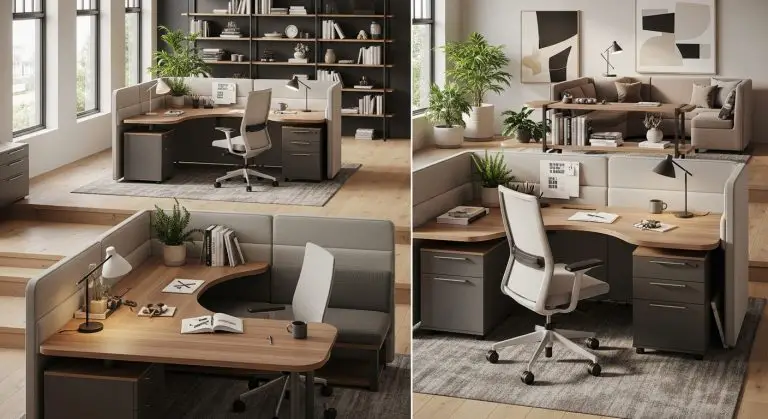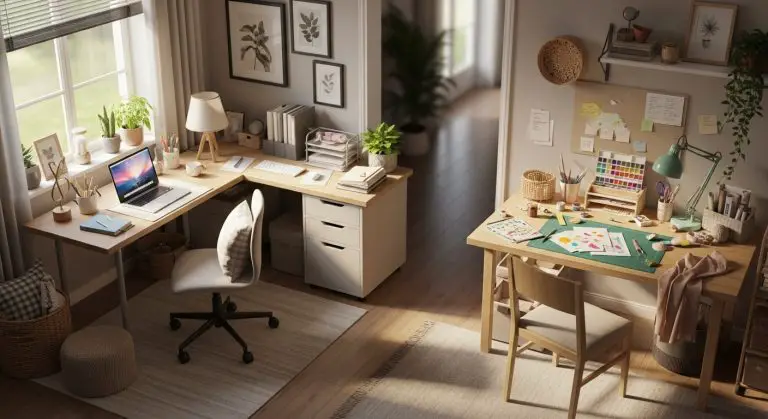15+ Boss Office Interior Design: The Ultimate Guide to a Stylish, Productive Space
Hey there! Ever walked into a boss’s office and thought, “Wow, I want to work here!”? Yeah, me too. There’s something about a well-designed office that just commands respect while still feeling inviting. Designing a boss office isn’t just about slapping a fancy desk and a leather chair together — it’s about creating a space that blends authority, style, and functionality.
I’ve spent countless hours exploring office layouts, furniture combos, and décor styles, and I’ve learned a few things along the way. Whether you’re upgrading your own office or designing one for your CEO, these 15+ boss office interior design ideas will help you craft a workspace that’s powerful, comfortable, and photogenic.
1. Statement Desk: Command Respect and Style
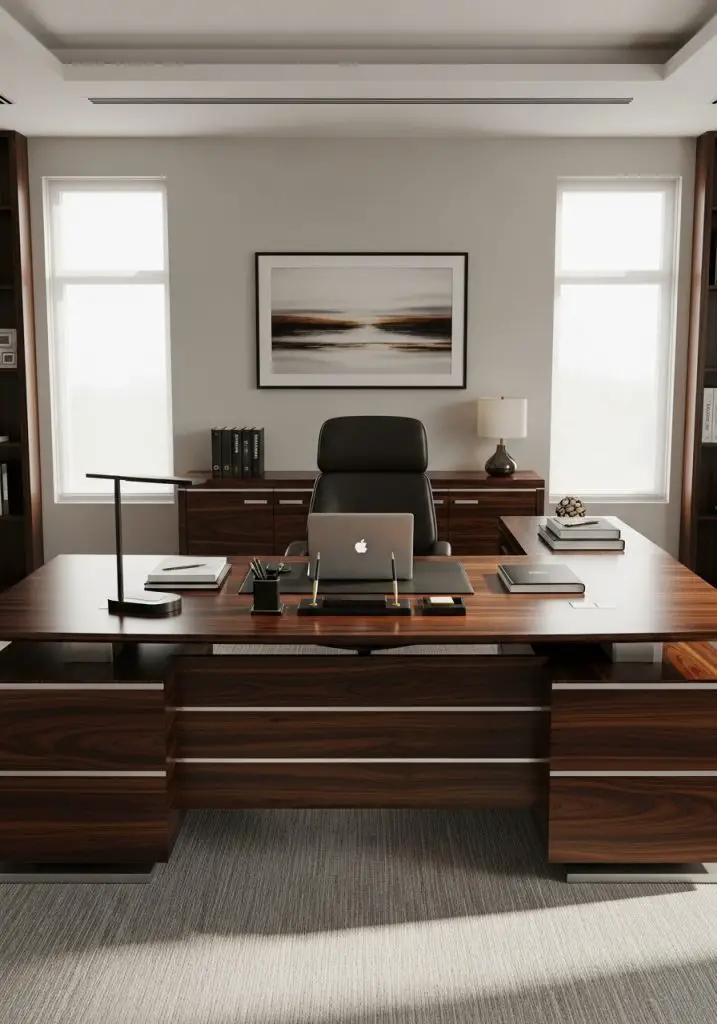
The desk is the centerpiece of any boss office. Choose a large executive desk with clean lines — wood, glass, or a mix of materials works well. Make sure it has enough space for your laptop, documents, and decorative items without looking cluttered. Position it so the view faces the door; this gives a sense of control while welcoming visitors.
I personally love desks with built-in storage — drawers and hidden compartments keep essentials close but out of sight. Add a subtle desk lamp for a touch of warmth, and maybe a luxury pen set for that extra boss vibe.
2. Comfortable Executive Chair: Posture Meets Prestige
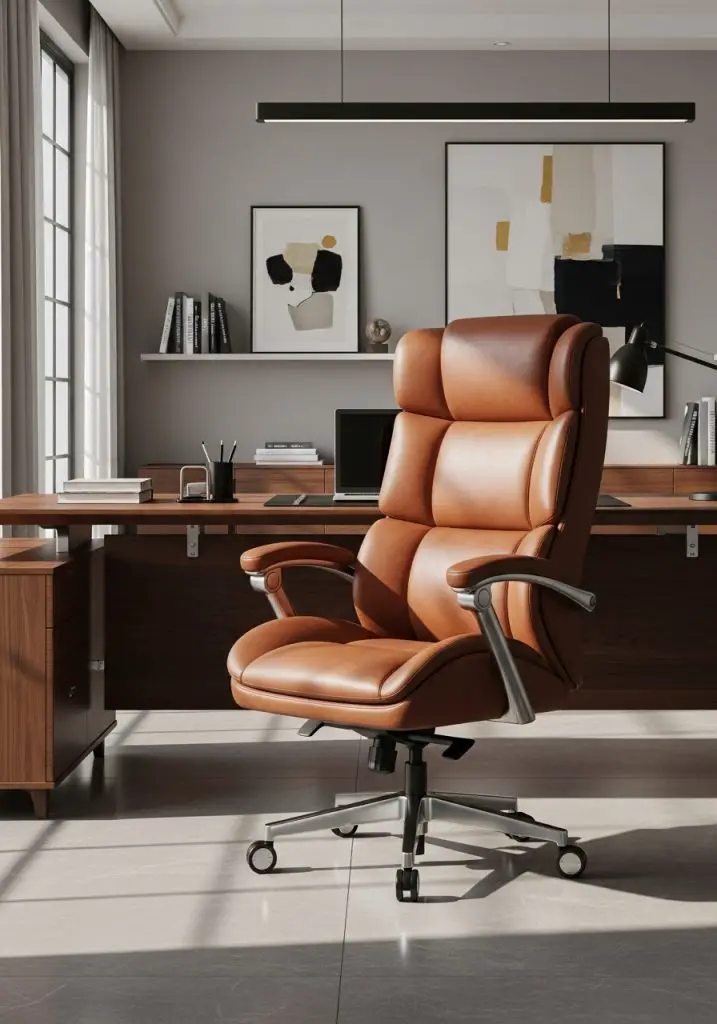
A high-back leather or mesh chair isn’t just about looking impressive — it’s about comfort during long meetings. Adjustable height, lumbar support, and swivel functionality are key. Pick a chair that complements your desk’s color and material.
IMO, a chair that looks sleek but feels like sitting on a cloud is non-negotiable. It’s amazing how a proper chair can boost confidence — and prevent back pain!
3. Open Floor Layout: Spacious and Inviting
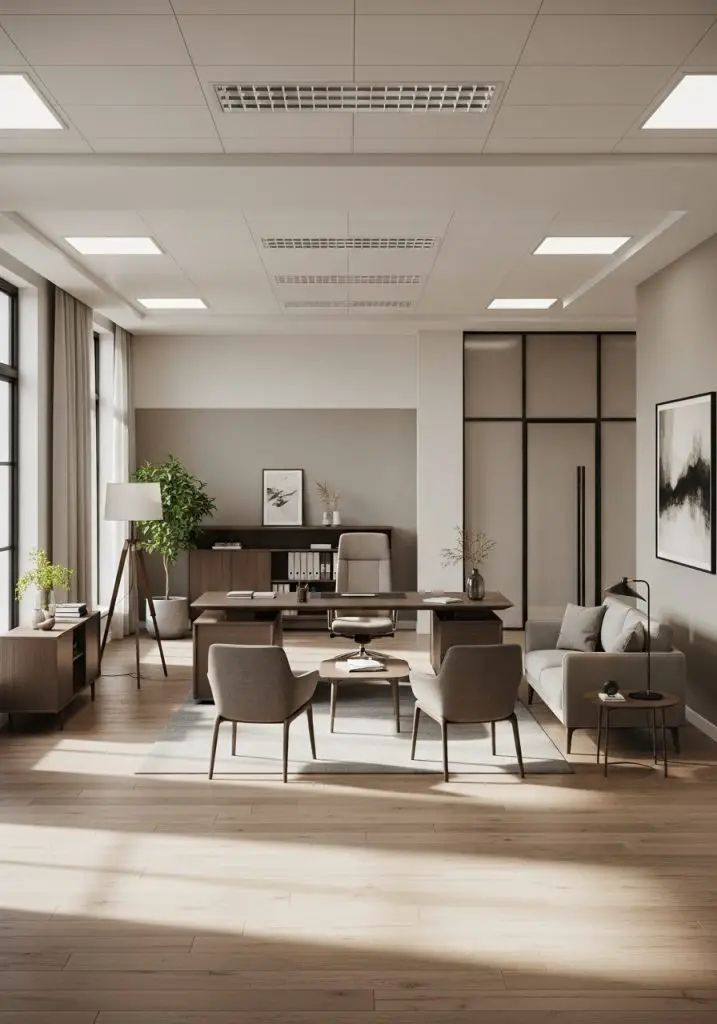
Cramped offices feel… well, cramped. Keep the layout open, allowing for free movement around the desk and seating areas. Position sofas or chairs for visitors so they’re facing the desk but not blocking pathways.
I like adding a small side table and a floor lamp near seating areas. It keeps the space functional while signaling that this office is meant for both work and conversation.
4. Personalized Décor: Reflect Your Personality
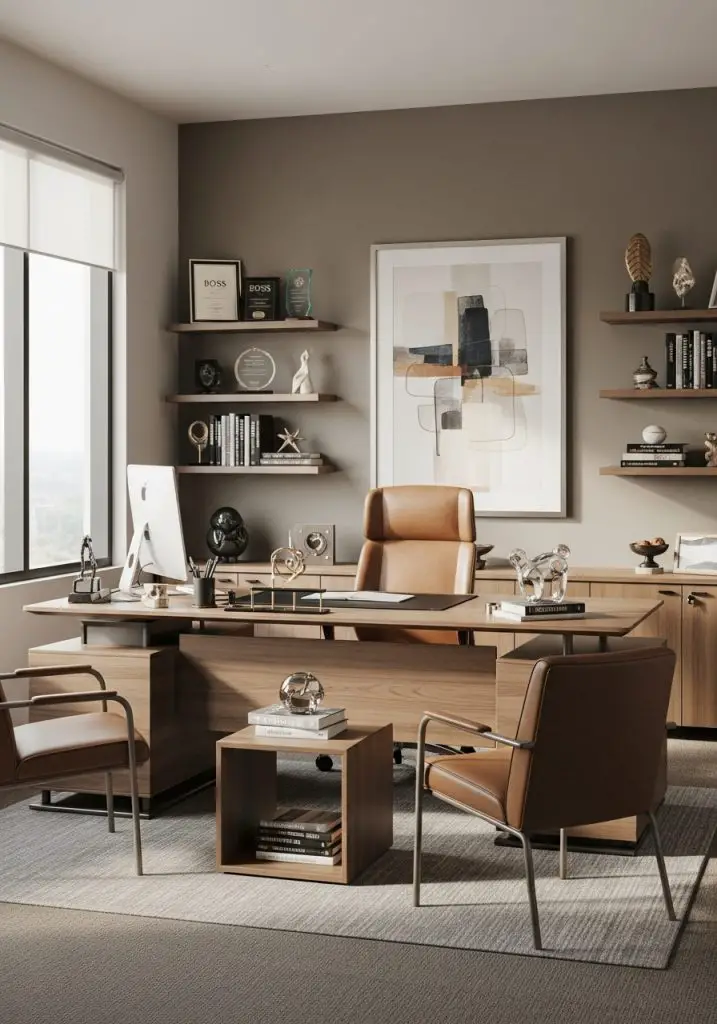
A boss office should feel unique. Incorporate personal touches like framed awards, art pieces, or travel souvenirs. But keep it tasteful — clutter can ruin the authority vibe.
Think minimalist shelving or a floating wall display. Plants, books, or sculptures can double as style elements and conversation starters.
5. Accent Wall: Add Depth and Sophistication
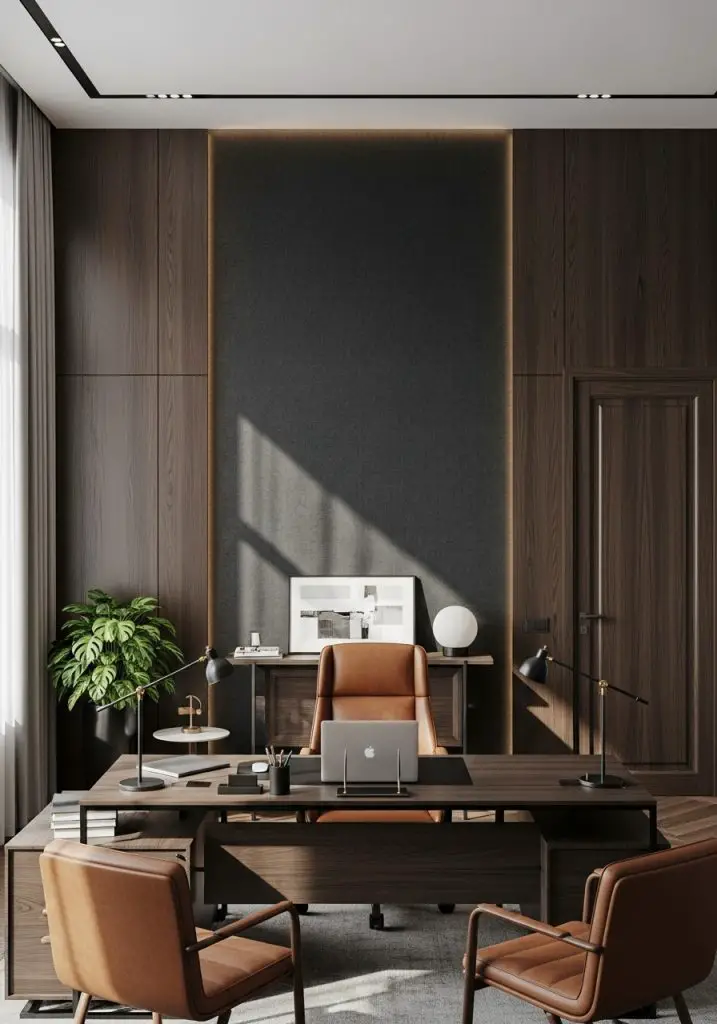
A bold wall behind the desk can anchor the room and create a focal point. Consider dark wood panels, textured wallpaper, or deep-toned paint. Keep other walls neutral to balance the space.
I once tried a dramatic navy accent wall with a sleek gold frame for art — the combination made the office feel both modern and powerful.
6. Lighting Strategy: Functional and Flattering
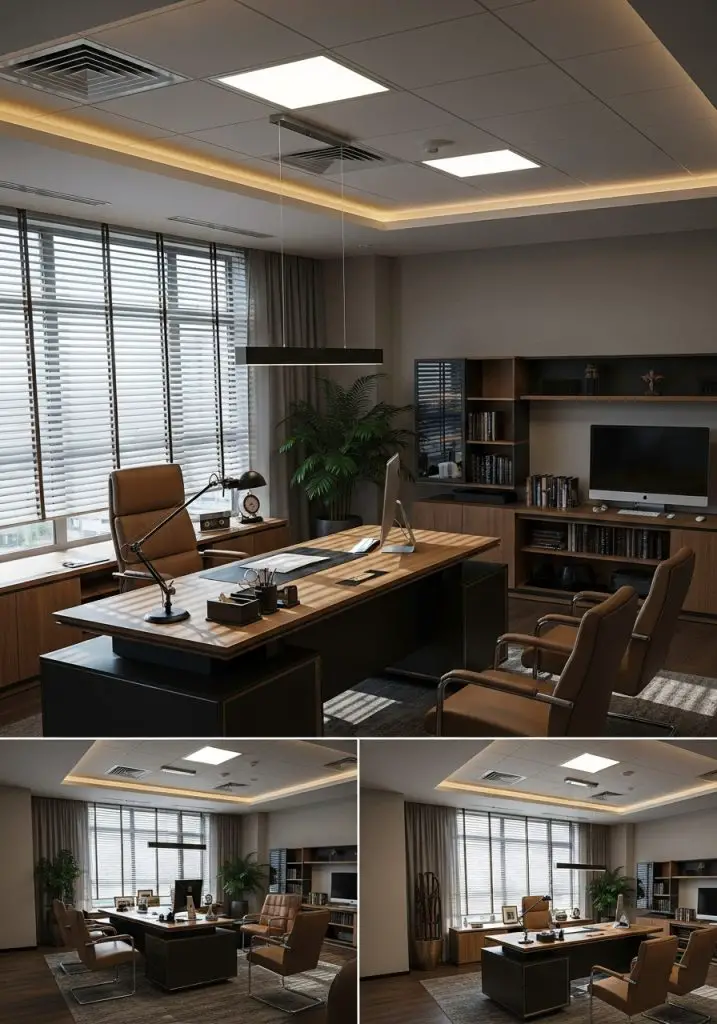
Lighting should be layered. Combine ambient lighting (overhead), task lighting (desk lamps), and accent lighting (spotlights or LED strips). Natural light? Absolutely yes! Position your desk to catch some sunlight, but use sheer blinds to avoid glare.
FYI, fluorescent lighting alone makes offices feel harsh. Warm tones and dimmable fixtures create a welcoming atmosphere.
7. Meeting Nook: Small but Strategic
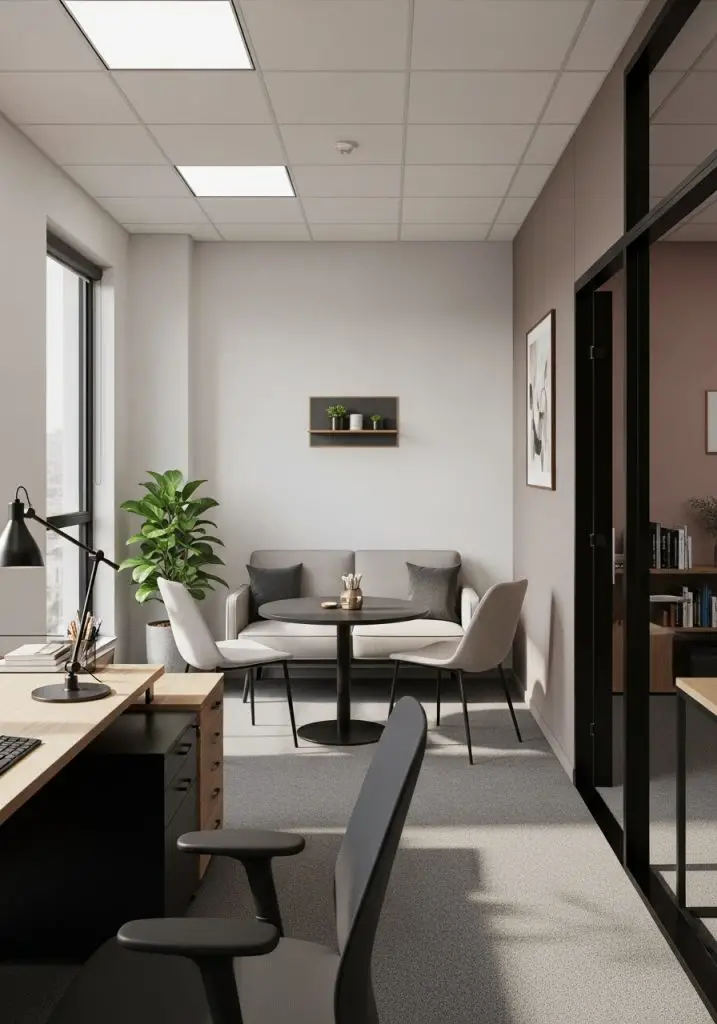
Even a boss office benefits from a small meeting area. A compact sofa, two chairs, and a round table work perfectly. Position it near natural light and keep decorative elements minimal.
IMO, these nooks foster spontaneous chats and brainstorming without leaving the office — a huge productivity plus.
8. Storage Solutions: Clutter-Free Dominance
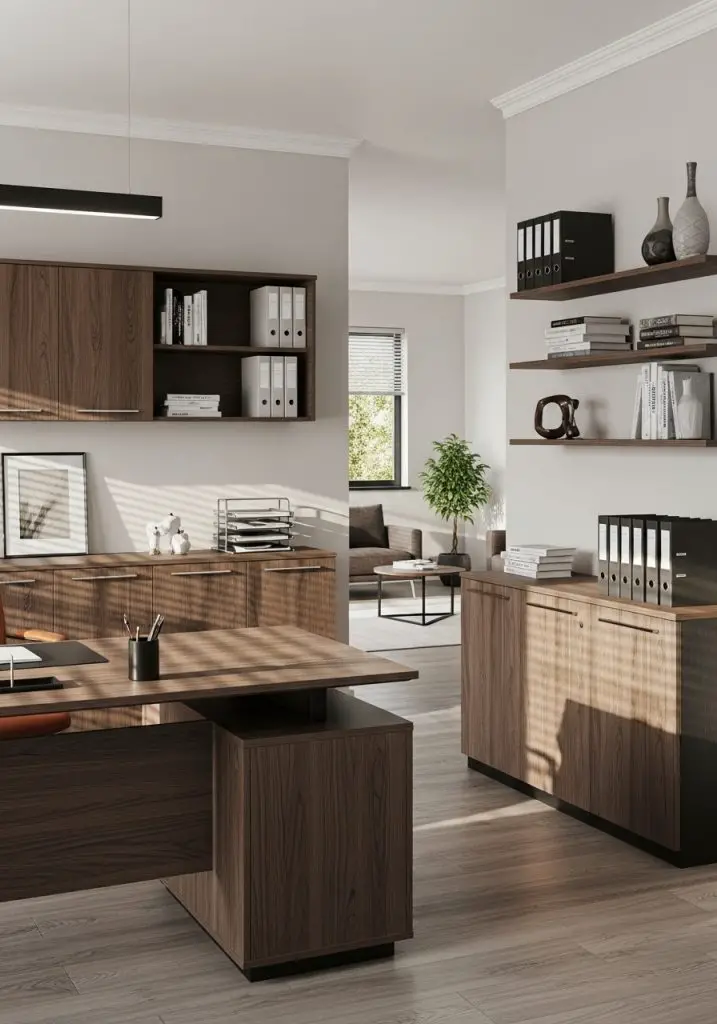
Built-in cabinets, sideboards, or floating shelves help keep the office organized and stylish. Personal items, files, and tech gadgets stay hidden but accessible.
I personally love closed storage for documents and open shelves for books and décor. It balances authority with personality.
9. Flooring: Durable Yet Luxurious
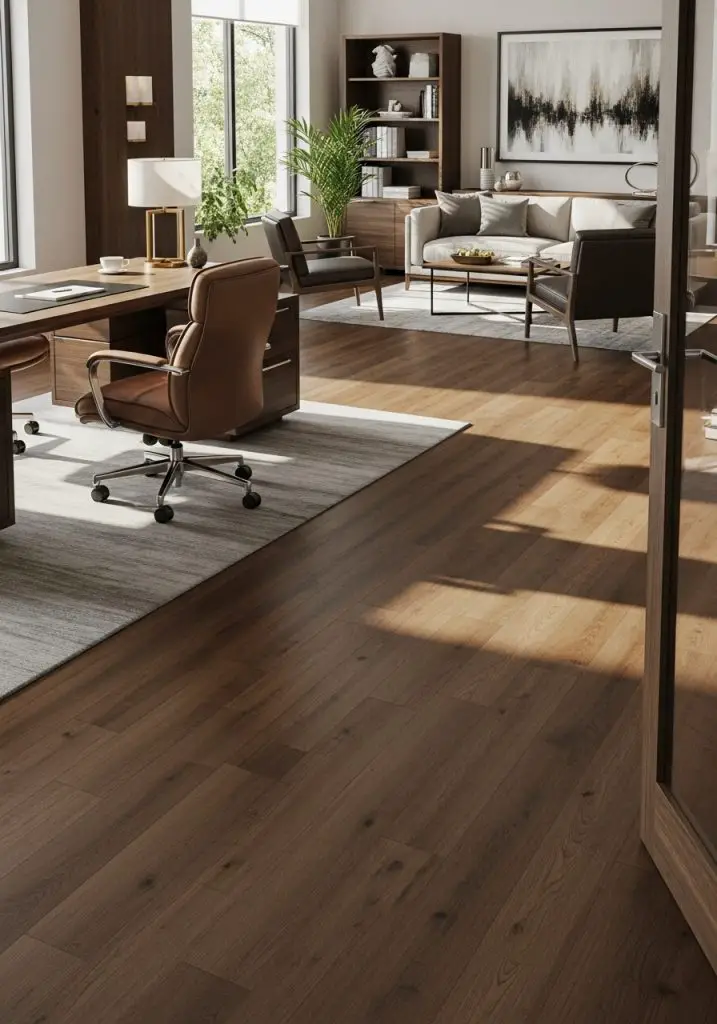
Hardwood, polished concrete, or luxury vinyl floors give a clean, modern look. Add area rugs near seating or under the desk for warmth and comfort.
Pro tip: rugs with subtle patterns prevent the room from feeling too cold while maintaining sophistication.
10. Biophilic Touches: Plants for Productivity
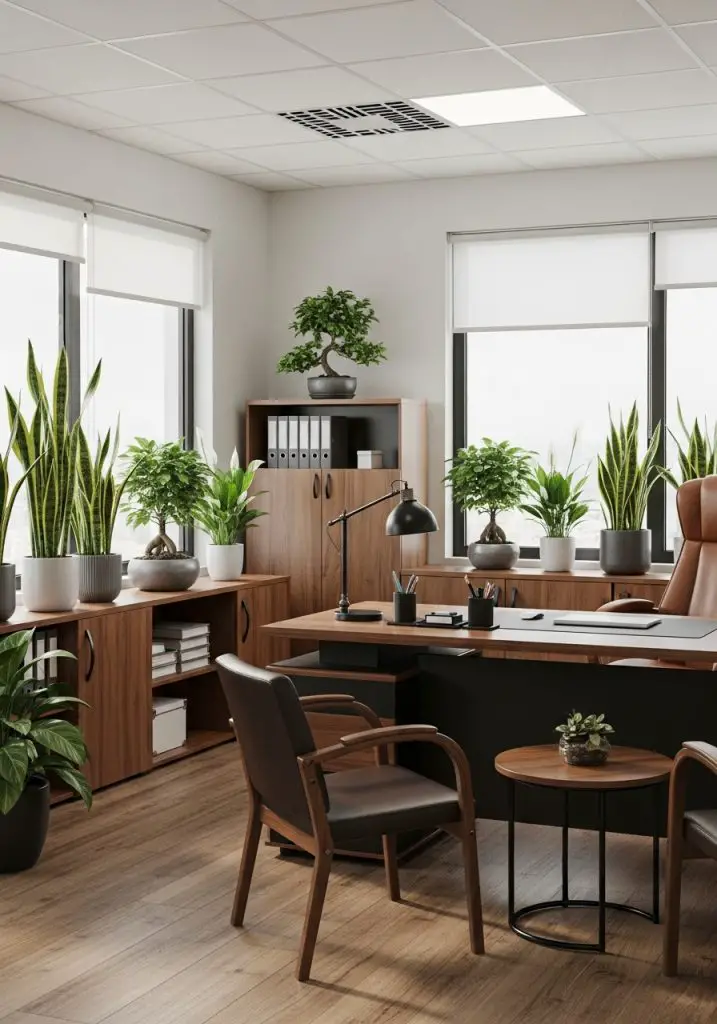
Plants aren’t just decoration — they improve air quality and reduce stress. Snake plants, peace lilies, or small bonsai trees work well. Position them on shelves, desks, or near windows.
IMO, greenery adds life to a room without taking away from the executive vibe. Plus, low-maintenance options mean less fuss.
11. Wall Art & Branding: Show Your Vision
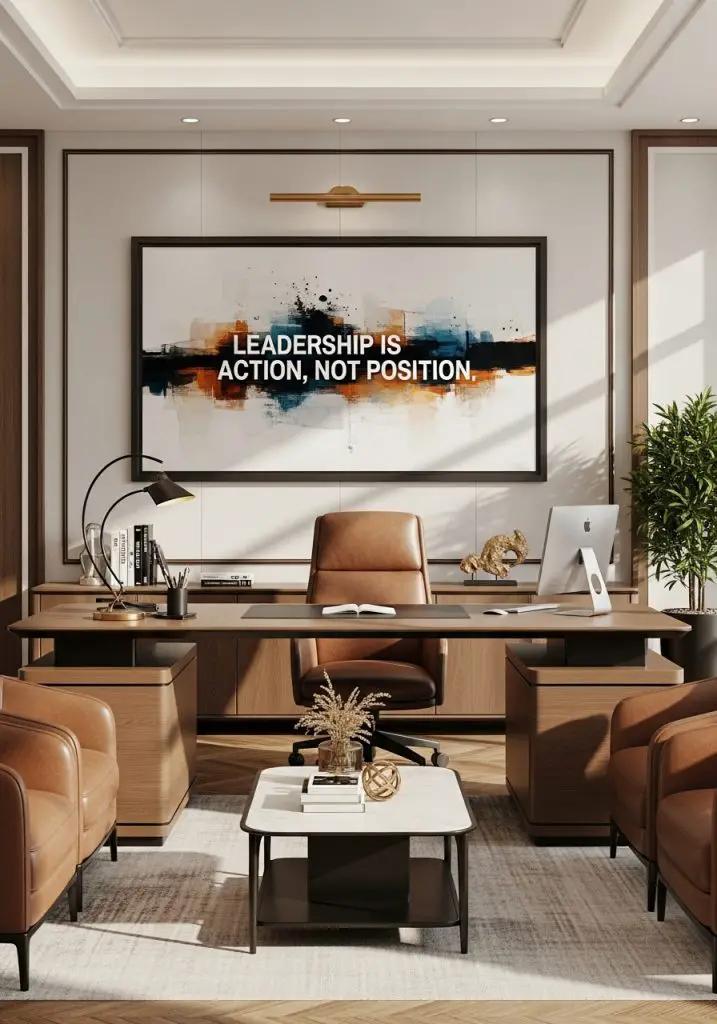
Incorporate art that reflects your personal taste or the company’s identity. Framed abstract pieces, motivational quotes, or subtle brand elements work wonders.
I’ve seen offices with large canvas art behind the desk — it sets a bold statement without screaming “corporate!”
12. Tech Integration: Seamless and Smart
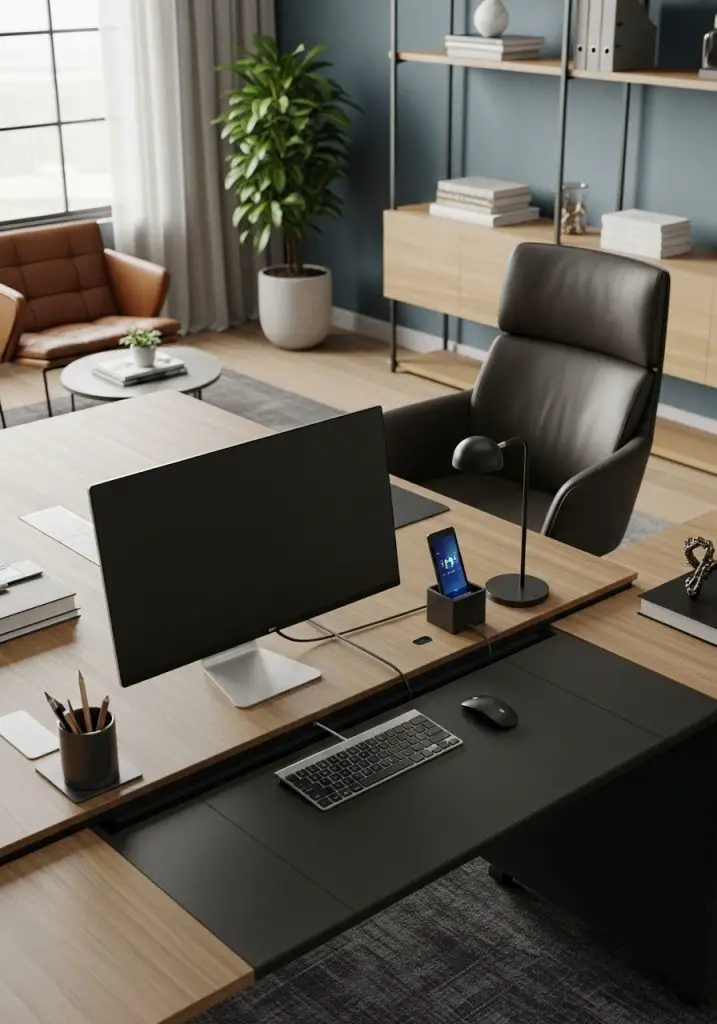
Keep cables hidden, use wireless devices, and integrate smart tech where possible. Charging stations, hidden monitors, and motion-sensor lighting enhance functionality without clutter.
FYI, nothing kills the “wow factor” faster than messy cords everywhere. Clean, organized tech = professional polish.
13. Window Treatments: Balance Light and Privacy
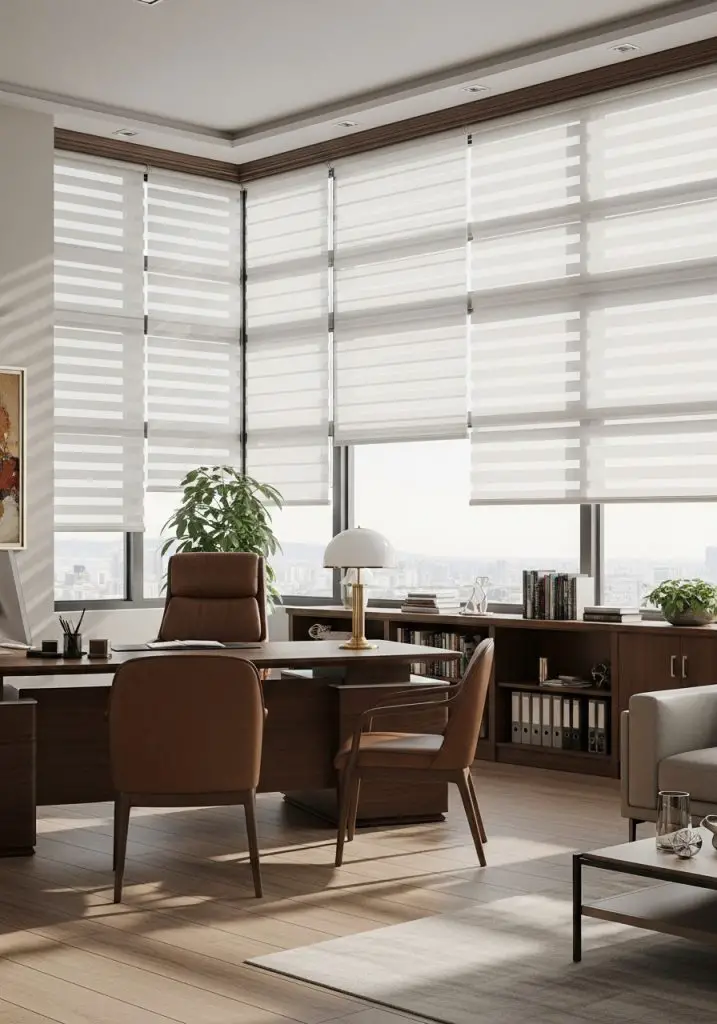
Sheer blinds, roller shades, or layered curtains allow control over light without compromising aesthetics. Layered treatments let you adjust natural light for different moods — meetings, solo work, or casual brainstorming.
I like mixing neutral tones with subtle textures to keep it modern and cozy.
14. Flooring Rugs & Texture: Define Zones
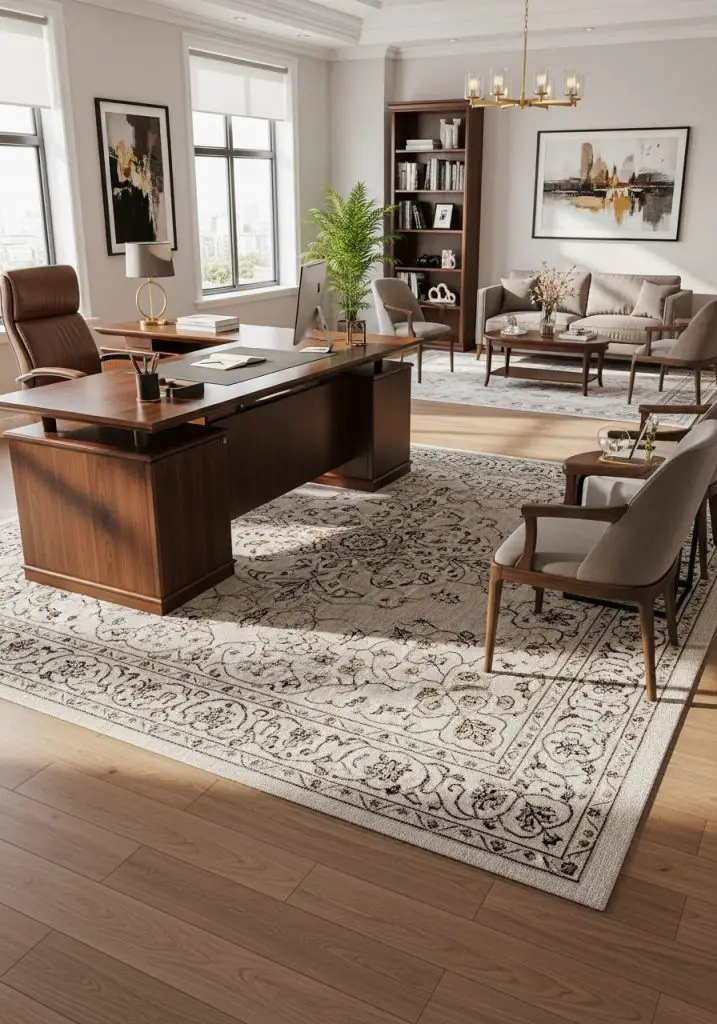
Adding a statement rug under the desk or seating area separates zones visually. It also introduces texture, making the room feel welcoming yet professional.
IMO, layering textures — smooth desk surface, soft rug, and upholstered chairs — adds depth without overwhelming the space.
15. Accessory Selection: Subtle Luxury
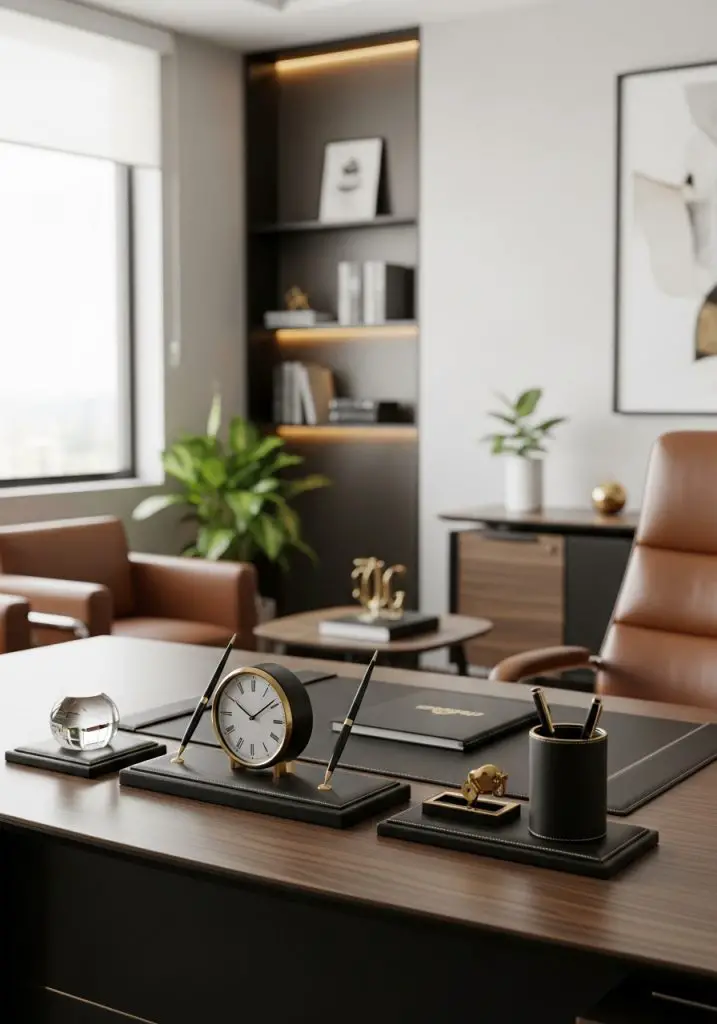
Decorate with luxury items in moderation: a crystal paperweight, elegant clock, or designer pen holder. Avoid over-accessorizing; subtlety conveys power.
A minimalist approach ensures the office feels classy, not cluttered, and every item signals intention.
16. Ambient Acoustics: Sound Matters
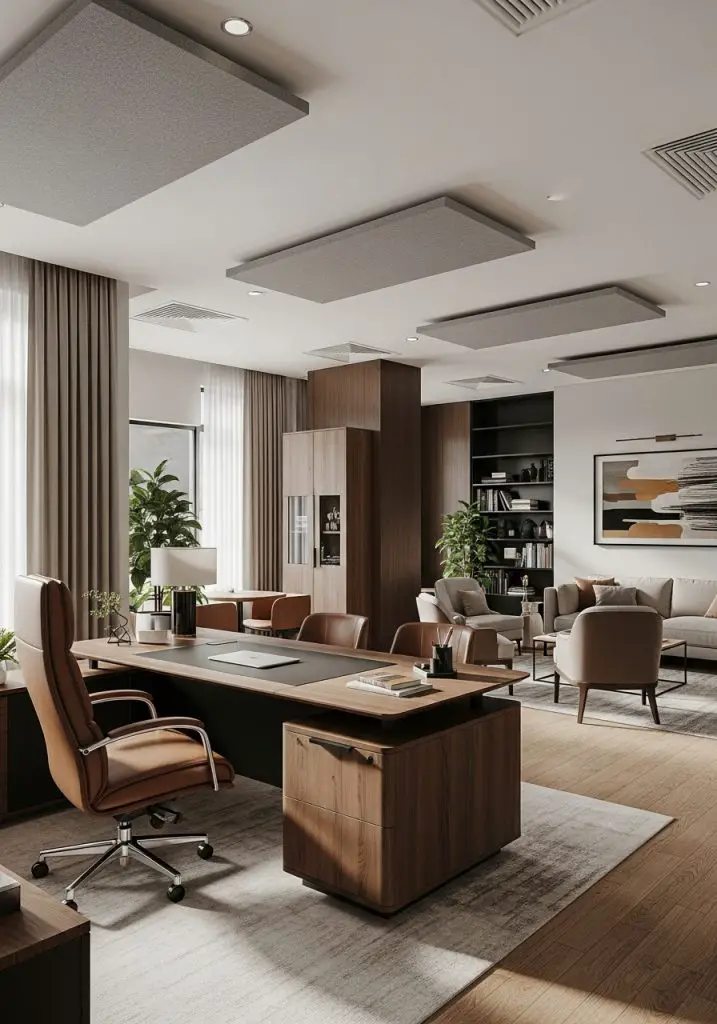
Install soft furnishings, rugs, and acoustic panels to minimize echo and create a calm work environment. This is especially important in high-ceiling offices.
IMO, the difference is noticeable — a quiet office immediately feels more focused and executive.
17. Cozy Seating: Mix Authority with Comfort

Even bosses need comfort. Include a small reading chair or lounge area with a floor lamp and side table. It’s perfect for solo work, phone calls, or casual brainstorming.
I personally think this addition transforms a standard office into a space where people actually want to spend time.
Wrapping It Up: Your Boss Office, Perfected
So there you have it — 15+ boss office interior design ideas that blend authority, style, and functionality. From executive desks and ergonomic chairs to accent walls and biophilic touches, every element contributes to a room that commands respect while remaining inviting.
Remember, boss office interior design isn’t about excess or opulence — it’s about intentional, thoughtful choices that make the space productive and stylish. Whether you’re designing from scratch or revamping, these tips will help you create an office people admire — and maybe even envy a little 😉

Emma Davis specializes in designing healthier, WELL Accredited Professional and PhD in Environmental Psychology and more mindful living spaces. With a deep understanding of how environments impact well-being, she shares expert insights on HouzGem to help readers create homes that support both physical health and emotional comfort.

